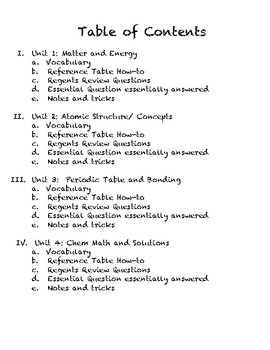
- #Periodic table chemistry nyc pro#
- #Periodic table chemistry nyc series#
- #Periodic table chemistry nyc free#
ValoresĮxponentium ita inventi repraesentati ut functiones oneris nuclearis Z regulas lineares sequuntur


Quae praebent optimam repraesentationem du¯abus copiis functionum atomic¯arum: alterae BungenianaeĮxsistenti ad elementa H–Xe, alterae Kogaensi porrectae ab H ad Lr (Z = 103). Minimalium atomic¯orum parametr¯orum (Moscovia-Aquisgrana-Lutetia Parisi¯orum – MAP)
#Periodic table chemistry nyc pro#
Minimizatio angul¯orum Frobenian¯orum inter subspatiˇa functionaliˇa prognatˇa copiis differentibusįunctionum atomic¯arum est adhibita ad valores exponentium orbitalium � determinandos pro basibus (h) Fr, Og, Uue, Ubn are predicted to have unusual valence-active (n−1)p 3 / 4 2 ns 0−2 shells, i.e., no closed p 6 noble-gas shell. Fl, Mc, Ts, Og have comparably inert 7s½ 2 (and 7p½ 2 ) pairs. (g) The superheavy elements at the end of the bottom row feature peculiarities: Cn, Nh, Fl are predicted to have a chemically active d shell under ambient conditions. form primary bonds under ambient chemical conditions.

(f) He, Ne, Ar have well-closed 1s 2, 2p 6, 3p 6 shells, respectively, at most forming complexes with weak secondary bonds, i.e., they have no 'real chemistry' under ambient conditions. (e) H and He are unique with having no extended atomic core and no other orbital energetically nearby 1s.
#Periodic table chemistry nyc series#
(d) The 2p series B-F is unique with the 2s and 2p orbitals of comparable spatial extension and a strong tendency for sp hybridization. (c) Elements Zn-Hg of group 12 have closed d 10 shells and are better regarded as members of the sp block. (b) The 3d elements Sc to Cu are special in forming high-and low-spin, or weak-and strong-field, complexes with ligands from the left and right part, respectively, of the spectro-chemical series, while the 4d and 5d elements usually only form low-spin strong-field complexes with any ligands. Conversely, Ac and the heavier actinoids Cm to Lr are quite similar to their lanthanoid counterparts La and Gd to Lu, and to Sc and Y. Notes on variant backgrounds: -(a) Ac … : some early actinoids Pa to Pu (and possibly Th and Am) are chemically quite different from their lanthanoid counterparts (Ce)-Pr-Nd-Pm-Sm-(Eu). Colored block castes of elements: s-yellow, p-green, d-blue, f-lilac. −4th line: g = group number = number of chemically active electrons in the valence shell of largely neutral atoms bonded at ambient conditions (modulo 10). simple = simplified approximate chemical valence configuration of typical bonded atoms. realistic = ℓ-occupations of typical, bonded atoms in real chemical compounds, where the case-dependent population parameter is mostly 0 < δ < 1.
#Periodic table chemistry nyc free#
−1st line at the top: Madelung's "idealized" occupations of the s, p, d, f (ℓ = 0, 1, 2, 3) valence shells in many neutral unbound free atoms in physical vacuum, taken over by the chemical community as the (n+ℓ, n) rule for less or more polar-bonded atoms in chemical compounds.

| The elegant "Left Step" periodic table, following the canonized "(n+ℓ, n) rule," see relation (5) below. The combination of experimental data and theoretical insight supports a more nuanced understanding of complex periodic trends and non-periodic phenomena. While it is essential that Periodic Tables display important trends in element chemistry we need to keep our eyes open for unexpected chemical behavior in ambient, near ambient, or unusual conditions. Simplified, artistic, or economic tables are relevant to educational and cultural fields, while practicing chemists profit more from “chemical tables of chemical elements.” Such tables should incorporate four aspects: (i) typical valence electron configurations of bonded atoms in chemical compounds (instead of the common but chemically atypical ground states of free atoms in physical vacuum) (ii) at least three basic chemical properties (valence number, size, and energy of the valence shells), their joint variation across the elements showing principal and secondary periodicity (iii) elements in which the (sp)8, (d)10, and (f)14 valence shells become closed and inert under ambient chemical conditions, thereby determining the “fix-points” of chemical periodicity (iv) peculiar elements at the top and at the bottom of the Periodic Table. Such tables have been designed with the aim of either classifying real chemical substances or emphasizing formal and aesthetic concepts. To this end, a graphical display of the chemical properties of the elements, in the form of a Periodic Table, is the helpful tool. Comprehensive overviews of the chemistry of the elements and their compounds are needed in chemical science. The chemical elements are the “conserved principles” or “kernels” of chemistry that are retained when substances are altered.


 0 kommentar(er)
0 kommentar(er)
